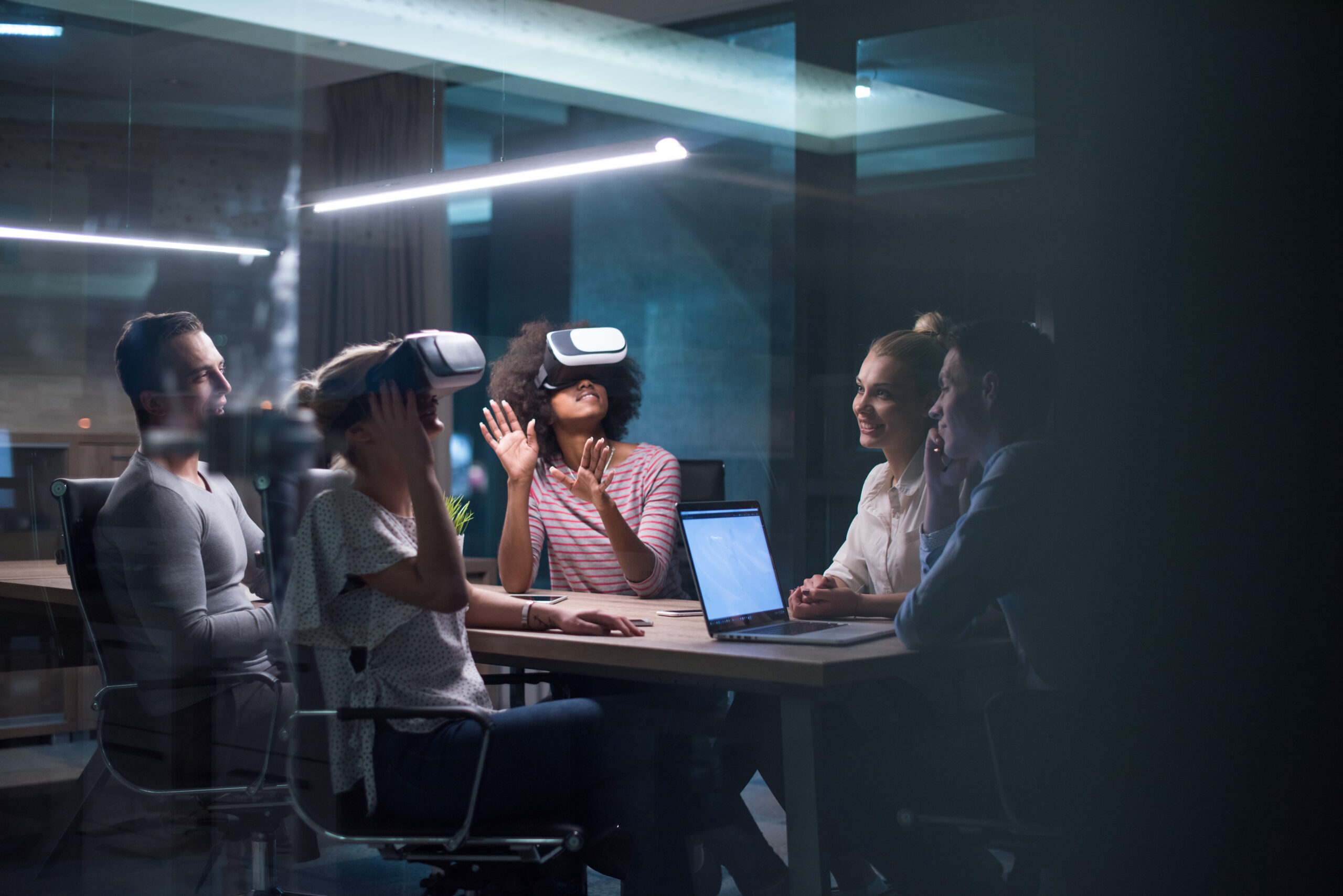Augmented Reality (AR) and Virtual Reality (VR) are two technologies that have been gaining popularity in recent years. These immersive technologies offer a unique way to experience the world around us, whether it’s through an augmented view or a completely virtual environment. While many people may associate these technologies with gaming and entertainment, they can also be powerful tools for businesses looking to enhance their operations and improve customer experiences. In this blog post, we will explore how AR/VR is revolutionizing various industries and changing the face of modern business.

Introduction to Augmented Reality and Virtual Reality
AR overlays digital information onto the real-world environment, while VR creates a fully immersive artificial environment. Both technologies use advanced hardware such as headsets, sensors, and cameras to create interactive experiences. With AR, users can see and interact with digital objects in the physical world, while VR transports users into a simulated environment where they can move freely and interact with virtual objects.
The Benefits of AR/VR for Businesses
One of the most significant benefits of AR/VR technology is its ability to provide hands-on training and education. By using simulations and virtual environments, employees can learn new skills without putting themselves or others at risk. For example, companies can train workers on dangerous tasks like working with heavy machinery or handling hazardous materials in a safe and controlled environment. Additionally, AR/VR can help businesses streamline their operations by providing real-time data visualization and analytics, improving decision-making processes and reducing costs.
How AR/VR is Changing the Customer Experience
Another area where AR/VR is making waves is in the retail industry. Retailers are now using AR and VR to transform the shopping experience for customers. They can virtually try on clothes, furniture, and other products before buying them, which reduces returns and increases sales. AR/VR can also enhance marketing campaigns by creating immersive brand experiences that engage consumers emotionally and drive conversions.
Immersive Technology in Training and Education
In addition to workforce development, AR/VR has enormous potential in education. Schools and universities can leverage immersive technology to create more engaging learning experiences. Students can explore historical sites, conduct scientific experiments, and practice medical procedures in a safe and controlled environment. This approach not only makes learning more fun but also helps students retain knowledge better.
The Future of AR/VR: What’s Next?
As AR/VR continues to evolve, we can expect even more exciting applications across different industries. One promising area is healthcare, where doctors and surgeons can use VR to simulate complex surgical procedures before performing them on patients. Another application could be in architecture and design, where architects and interior designers can use AR to visualize their designs in real-world settings before construction begins. The possibilities are endless!
Conclusion
Overall, AR/VR technology offers unparalleled opportunities for businesses to innovate, differentiate, and grow. Whether you’re looking to enhance your employee training programs, revamp your customer experience, or expand your product line, there’s something for everyone in the world of immersive tech. So, if you haven’t already jumped on board the AR/VR bandwagon, now might be the time to consider it.